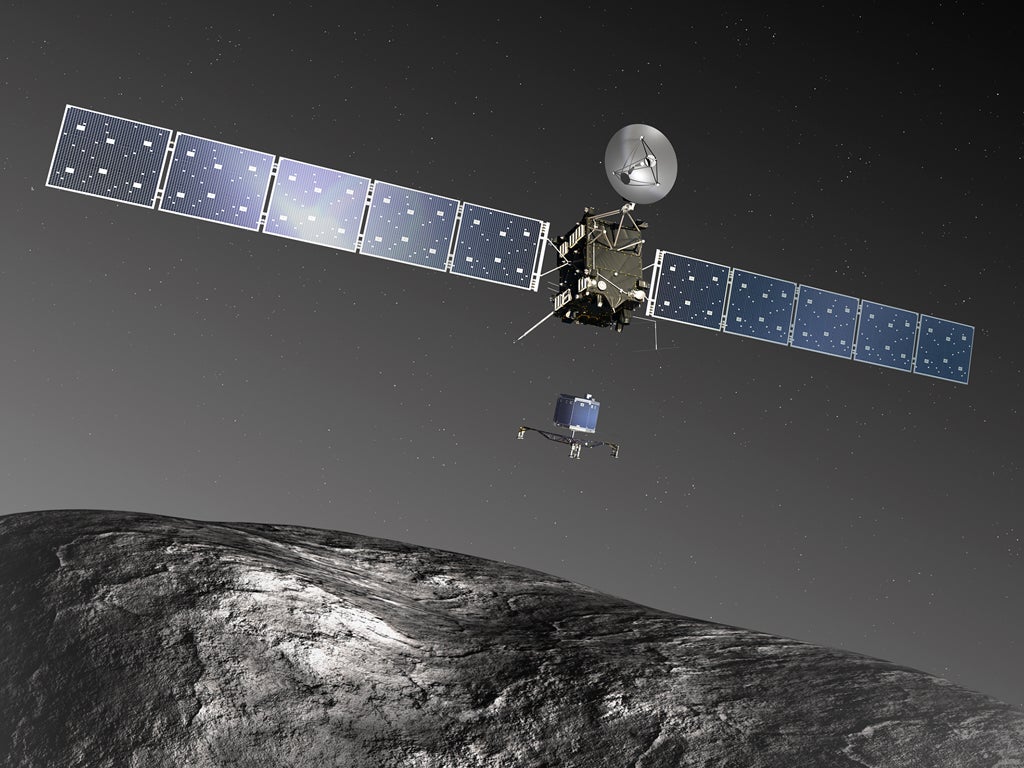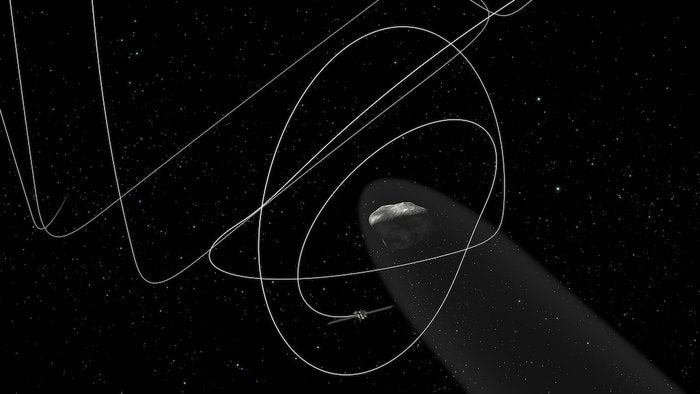Rosetta spacecraft nears historic, 34,000mph rendezvous with 'rubber duck' comet
The €1.3bn project will offer the closest observation of a comet ever and could even answer questions about the origin of life

Later today the European Rosetta spacecraft is scheduled to rendezvous with a comet, bringing to an end a 10 year chase over four billion miles that has been described by scientists involved as “the sexiest, most fantastic mission ever”.
The European Space Agency’s (ESA) Rosetta probe will catch up with the comet known as 67P/Churyumov-Gerasimenko as it hurtles through space at speeds of 55,000kmph (34,000mph), using its on-board thrusters to adjust its speed until it is circling 67P at a gentle walking pace.
Although probes and satellites have performed flybys of these icy bodies before, this will be the first time that scientists have ever had a chance to conduct sustained observation of a comet.
Rosetta, which is named after the archaeological stone that helped us decipher ancient Egyptian hieroglyphics, will try to establish a triangular orbit around 100km 67P, studying its gravity field to prepare for closer observation.

If this orbit is successful then on 11 November the craft will launch a tiny 100kg lander, Philae, which will attach itself to the side of 67P with an explosive harpoon.
Tools on-board Philae will then be used to analyse the ice of 67P to see if its chemical composition is similar to that of water found on Earth - if so, it would give credence to the theory that Earth was originally a 'dry' planet and that water and organic matter was seeded here by passing comets.
For today though, the Rosetta team will be waiting on tenterhooks to see if the approach is successful - a wait made all the more excruciating by the 22-minute delay for radio signals to travel from the spacecraft back to Earth.
“We have to make baby steps as we approach it, because we don't know exactly how the comet is behaving and how the spacecraft will behave around it.” project scientist Matt Taylor told the BBC.
This approach has been made all the more difficult by the unexpected shape of the comet, which appears as two fused pieces of rock - likened by most observers to a giant, space-bound rubber duck.
"We have a rough idea but we have to take a gradual approach to really get a handle on how to fly around a comet," said Dr Taylor.
"For me this is the sexiest, most fantastic mission there's ever been. It's ticking a number of boxes in terms of fascination, exploration, technology and science - predominantly science."
Join our commenting forum
Join thought-provoking conversations, follow other Independent readers and see their replies
Comments